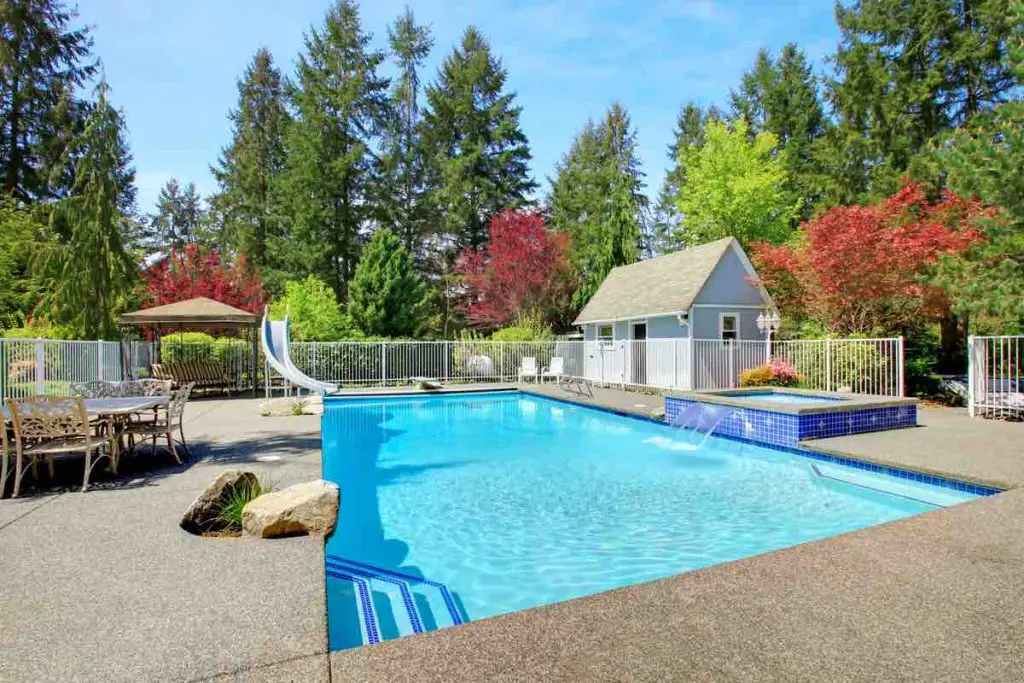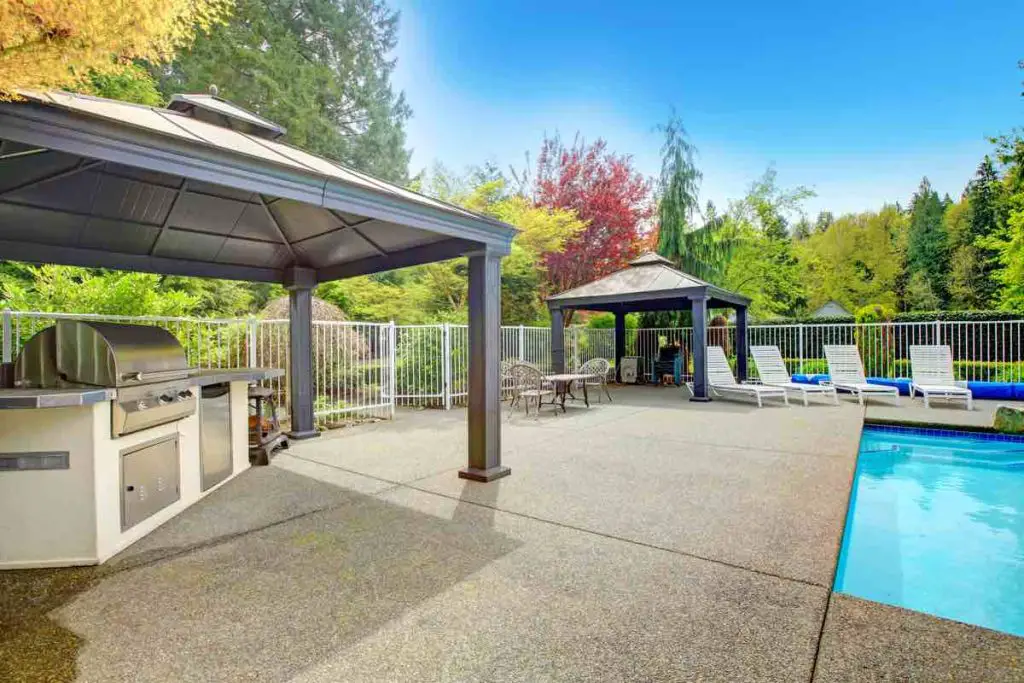Stamped concrete is a beautiful addition to your pool, as it looks extremely attractive and is much cheaper than stone, although it does happen to look quite similar. Closely mimics natural stone at a small part of the price. Stamped concrete can get a bit slippery at times. This makes it impractical despite the sleek look, so you might wonder if it’s possible to have a stylish stamped concrete surface around your pool without slipping on it.
Creating a textured concrete surface is the easiest way to make your stamped concrete less slippery. Additives like aluminum oxide or polymer grit are often mixed into the sealer to make it less slippery. You can also choose not to add a sealer, which might make your concrete less durable.
Keep reading if you’re interested in sprucing up your pool with stamped concrete. We’ll explain what you can do to make it less slippery and thus safer for you and your family.

Create a Textured Surface
The first step to making concrete or any other surface less slippery is making the surface textured. Texture makes the surface grittier and, thus, less slippery, so you don’t have to worry about falling back into the pool after getting out.
A textured surface might not be your primary choice regarding aesthetics. A smooth, perfectly polished surface looks much better, indeed. However, it’s worth sacrificing the aesthetics for safety. It’s better to have a slightly less beautiful pool than one that’s hazardous.
There are a few ways in which you can achieve this effect. The easier way is broom-finishing the concrete. The method is self-explanatory, referring to brushing the wet concrete with a horsehair broom.
Brushing is a good way to create texture since it creates small depressions in the concrete. These grooves will make the concrete less slippery and allow you to move around more freely.
Another option is to sand-finish your concrete. Sand-finishing pushes sand within the concrete up to the top layer, removing the sleek finish and making it more textured. This leaves a nice gritty finish that’s also non-slip. Using Sandscape is the easiest way to do this.
You can also use a spray-textured coating. This is also an easy way to texture your concrete, but it’s a bit more expensive than broom finishing. This coating is usually applied with a hopper gun, but you can also apply it as a splatter coat.
If you’re considering using stamped concrete around pools, it’s highly advisable to make it textured. This step alone might even reduce slipperiness to almost zero, so you can get away with not taking any additional steps.
Use an Anti-Slip Additive
Anti-slip additives are almost universally added to sealers to make them less slippery. It’s a good way to make your stamped concrete safer. It’s even better when you use it with another method, like texturing your concrete.
Aluminum oxide is a very common additive used for this purpose. There are mixed feelings about it. Some say it’s not the most effective tool since it often ends up at the bottom of the concrete mix. Its color is also relatively different from the otherwise light color of the concrete, so this might put you off.
This additive can also wear away, so you must reseal your concrete every two or three years if you use aluminum oxide.
Others recommend using aluminum oxide. They like that you can get it in different colors and that it’s not expensive. It also helps you concrete retain a clear look. It doesn’t make it hazy like some other substances.
Polymer grit is another common recommendation, and it gives good results. Polymer grit consists of tiny plastic shards. They’re easier to work with, and you can even customize the size if you wish, so you can choose how gritty you want your concrete to be.
Some recommend that you should apply polymer grit to your sealer once it’s on the concrete. Others recommend adding ground-up polymers to the sealer before applying it. You shouldn’t overdo it; three ounces (85 grams) of polymer per gallon (3.78 liters) of sealer should do the trick.
Avoid Using Sealer (But There Are Some Downsides)
Since stamped concrete (and concrete in general) is usually slippery because of the sealer you add to it, you choose not to apply a sealer to your patio. This will make the concrete less slippery but also less durable.
A sealer is generally necessary for decorative concrete. It protects it from cracking, flaking, and losing its color. It’s a wise choice if you want your decorations to survive and serve their decorative purpose instead of dilapidating quickly.
However, if you primarily worry about making the concrete around your pool less slippery, avoiding applying a sealer might not be a bad idea. Not applying a sealer will make the concrete grittier, especially if it’s not perfectly smooth, so there will be very little slipping.
The biggest drawback is that your concrete surfaces will start falling apart sooner, so you’ll have to repair them more often. This is a big problem if you want a particularly aesthetically pleasing patio you can show off for many years.
If you go down this route, you’ll have to invest time and effort into making the concrete as durable as possible. You’ll also have to ensure that the paint is high-quality so the concrete doesn’t lose its color quickly.
Some professionals try to improve their concrete as much as possible so they don’t have to resort to using sealers, or at least not a large amount of such compounds. You can try to find someone who’s well-versed in this to help you out.
Even if you only minimize the amount of sealer instead of removing it from the mix completely, your stamped concrete will become less slippery.
If you ever change your mind and want to remove paint from your concrete pool deck, you should read my how-to guide. You’ll learn what kind of chemicals to use and how to contain the run-off.

Conclusion
Slippery-stamped concrete around a pool is a common problem. Many pool owners face it, and it can spoil the pleasure you can get from your pool. However, it can be mitigated if you pay close attention to how the concrete is made and how it’s treated afterward.
